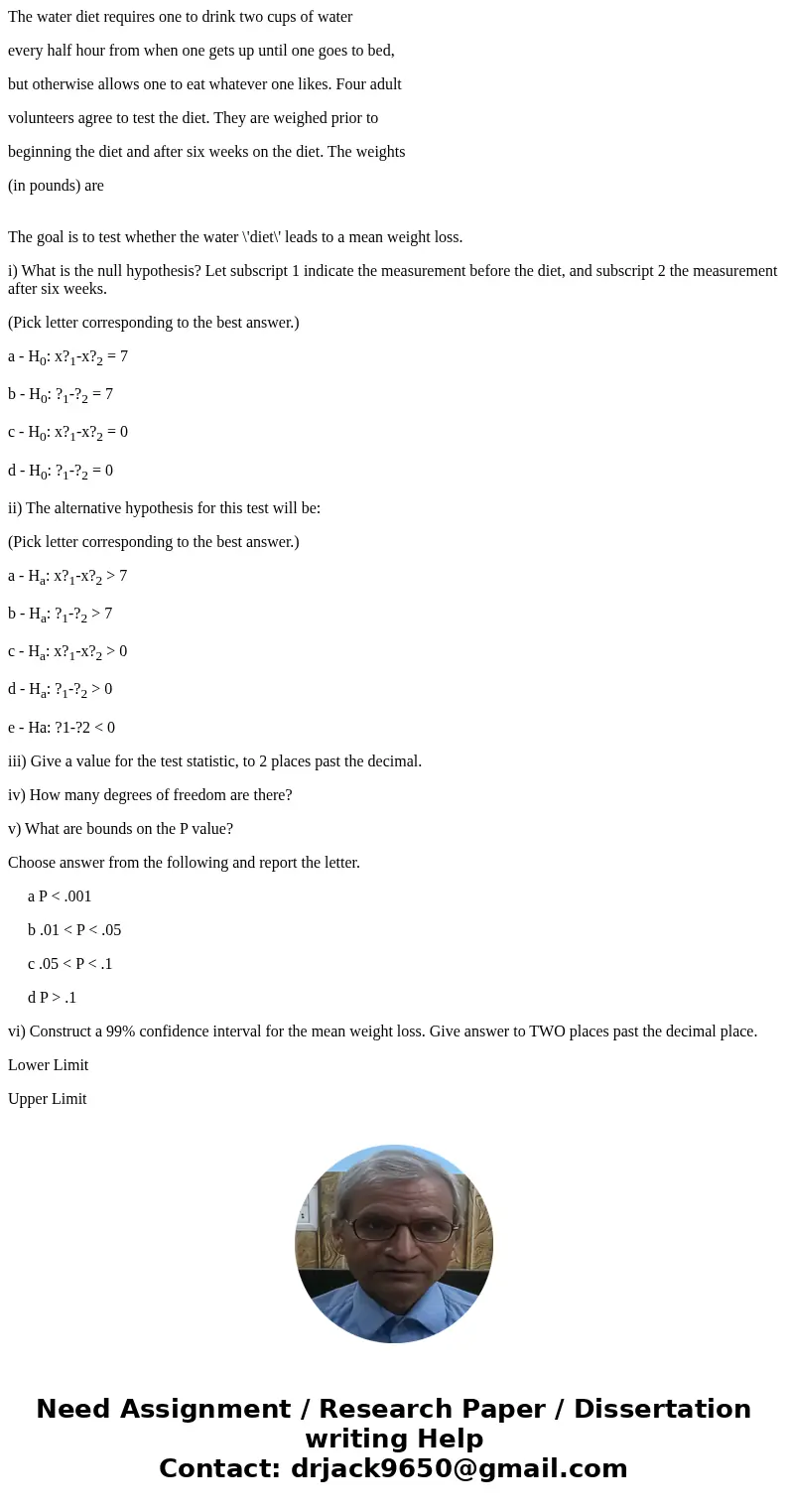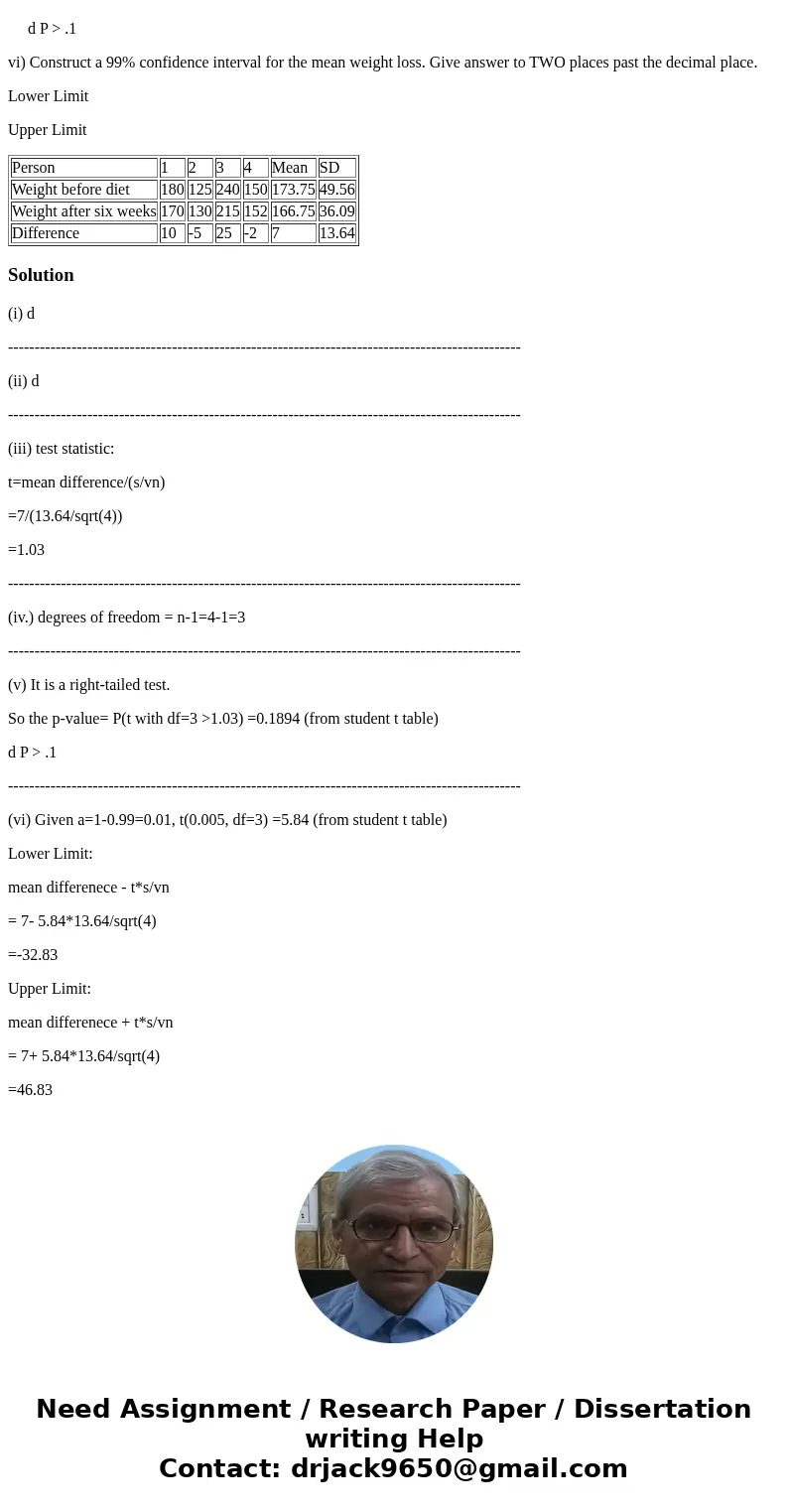The water diet requires one to drink two cups of water every
The water diet requires one to drink two cups of water
every half hour from when one gets up until one goes to bed,
but otherwise allows one to eat whatever one likes. Four adult
volunteers agree to test the diet. They are weighed prior to
beginning the diet and after six weeks on the diet. The weights
(in pounds) are
The goal is to test whether the water \'diet\' leads to a mean weight loss.
i) What is the null hypothesis? Let subscript 1 indicate the measurement before the diet, and subscript 2 the measurement after six weeks.
(Pick letter corresponding to the best answer.)
a - H0: x?1-x?2 = 7
b - H0: ?1-?2 = 7
c - H0: x?1-x?2 = 0
d - H0: ?1-?2 = 0
ii) The alternative hypothesis for this test will be:
(Pick letter corresponding to the best answer.)
a - Ha: x?1-x?2 > 7
b - Ha: ?1-?2 > 7
c - Ha: x?1-x?2 > 0
d - Ha: ?1-?2 > 0
e - Ha: ?1-?2 < 0
iii) Give a value for the test statistic, to 2 places past the decimal.
iv) How many degrees of freedom are there?
v) What are bounds on the P value?
Choose answer from the following and report the letter.
a P < .001
b .01 < P < .05
c .05 < P < .1
d P > .1
vi) Construct a 99% confidence interval for the mean weight loss. Give answer to TWO places past the decimal place.
Lower Limit
Upper Limit
| Person | 1 | 2 | 3 | 4 | Mean | SD |
| Weight before diet | 180 | 125 | 240 | 150 | 173.75 | 49.56 |
| Weight after six weeks | 170 | 130 | 215 | 152 | 166.75 | 36.09 |
| Difference | 10 | -5 | 25 | -2 | 7 | 13.64 |
Solution
(i) d
-------------------------------------------------------------------------------------------------
(ii) d
-------------------------------------------------------------------------------------------------
(iii) test statistic:
t=mean difference/(s/vn)
=7/(13.64/sqrt(4))
=1.03
-------------------------------------------------------------------------------------------------
(iv.) degrees of freedom = n-1=4-1=3
-------------------------------------------------------------------------------------------------
(v) It is a right-tailed test.
So the p-value= P(t with df=3 >1.03) =0.1894 (from student t table)
d P > .1
-------------------------------------------------------------------------------------------------
(vi) Given a=1-0.99=0.01, t(0.005, df=3) =5.84 (from student t table)
Lower Limit:
mean differenece - t*s/vn
= 7- 5.84*13.64/sqrt(4)
=-32.83
Upper Limit:
mean differenece + t*s/vn
= 7+ 5.84*13.64/sqrt(4)
=46.83


 Homework Sourse
Homework Sourse